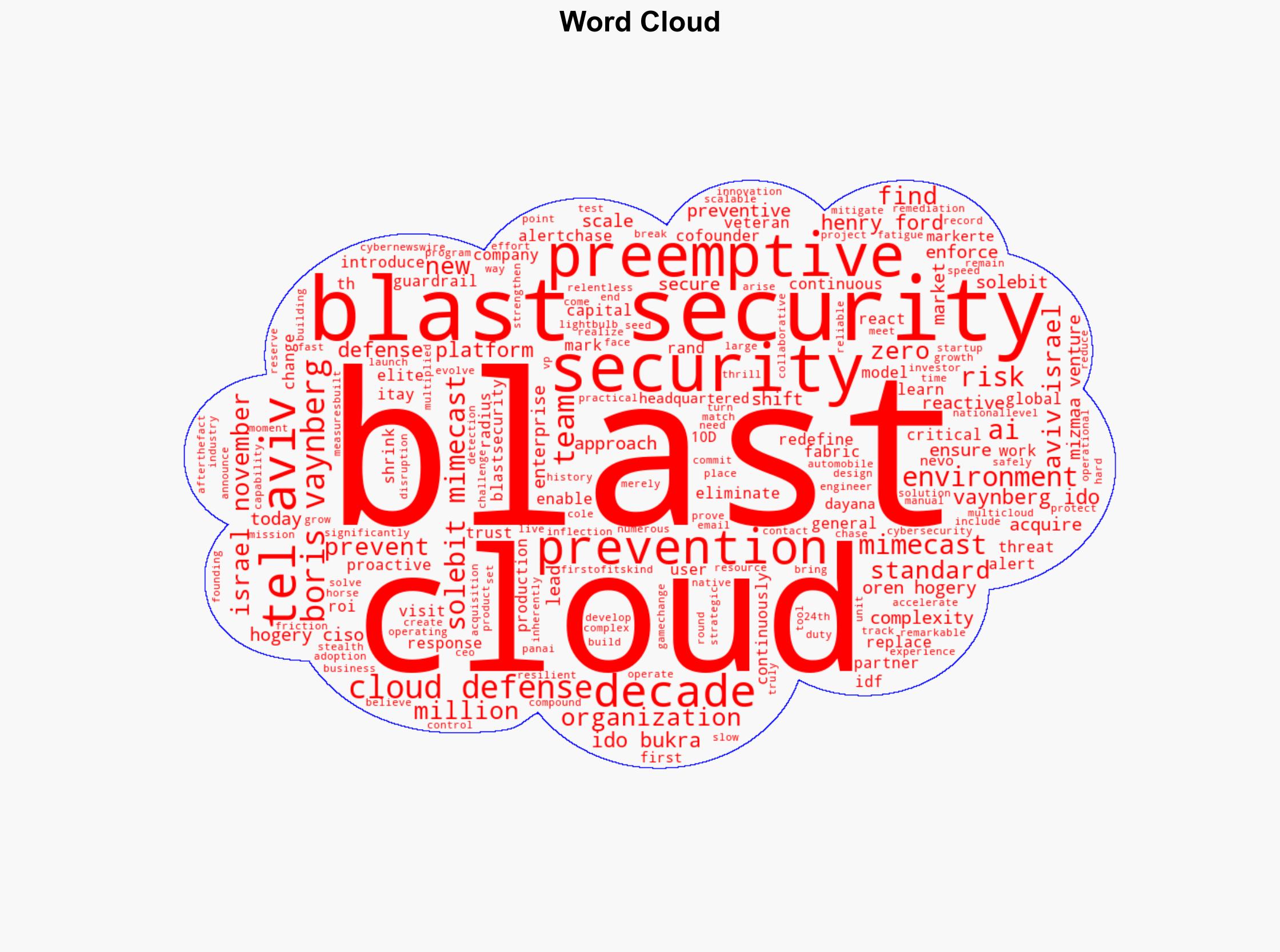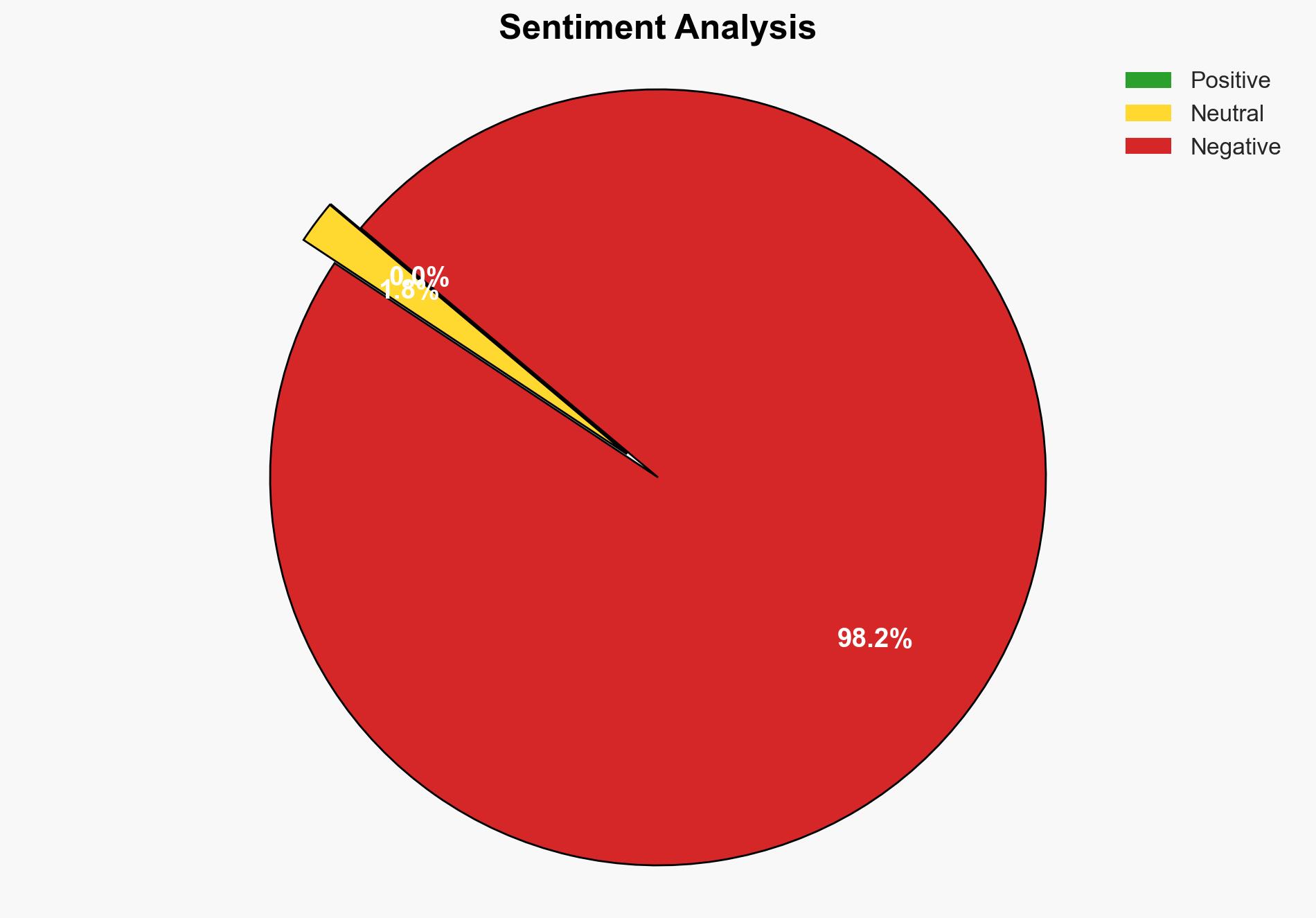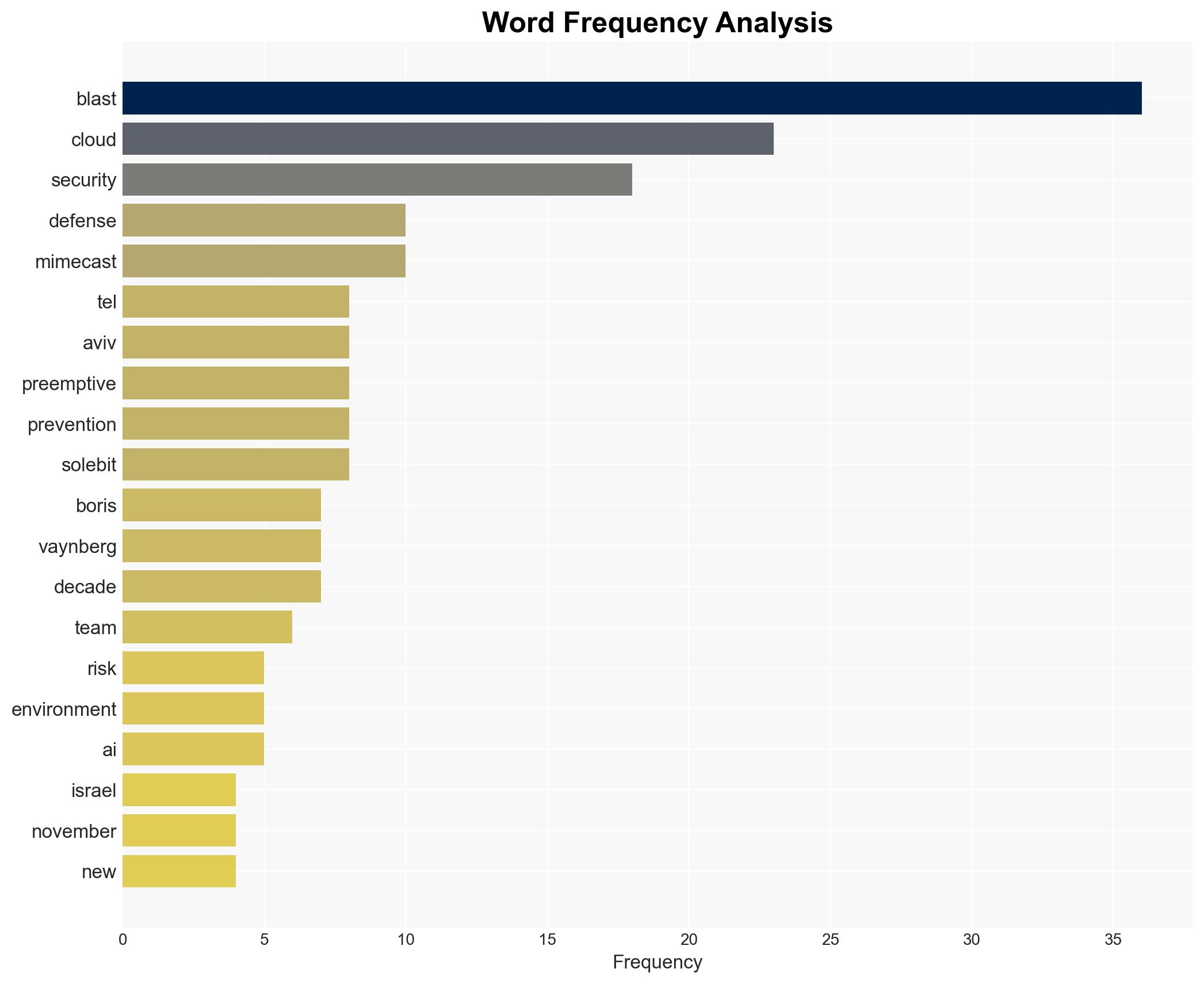Elite Cyber Veterans Launch Blast Security with 10M to Turn Cloud Detection into Prevention
Published on: 2025-11-24
AI-powered OSINT brief from verified open sources. Automated NLP signal extraction with human verification. See our Methodology and Why WorldWideWatchers.
Intelligence Report:
1. BLUF (Bottom Line Up Front)
With a moderate confidence level, the most supported hypothesis is that Blast Security’s new preemptive cloud defense platform could significantly alter the cybersecurity landscape by shifting the paradigm from reactive to proactive cloud security. This could lead to increased resilience against cyber threats for enterprises operating in multicloud environments. Recommended action includes monitoring Blast Security’s technological advancements and market penetration to assess its impact on existing cybersecurity strategies.
2. Competing Hypotheses
Hypothesis 1: Blast Security’s preemptive cloud defense platform will successfully redefine cloud security standards, leading to widespread adoption and a significant reduction in cloud-related cyber incidents.
Hypothesis 2: Despite its innovative approach, Blast Security may face challenges in market adoption due to potential integration issues, resistance from established cybersecurity firms, or unforeseen technical limitations.
Hypothesis 1 is more likely due to the founders’ proven track record and the increasing need for proactive cybersecurity solutions in the face of growing cloud complexity and AI integration.
3. Key Assumptions and Red Flags
Assumptions include the belief that enterprises are ready to transition from reactive to proactive security models and that Blast Security’s platform can integrate seamlessly with existing systems. Red flags include potential over-reliance on the founders’ past successes and the possibility of underestimating the challenges of market penetration against established players.
4. Implications and Strategic Risks
If successful, Blast Security could catalyze a shift in cybersecurity strategies globally, potentially reducing the frequency and impact of cyber incidents. However, failure to deliver on its promises could lead to skepticism about proactive security models, possibly stalling innovation in the sector. Additionally, geopolitical tensions could arise if such technologies are perceived as favoring specific national interests.
5. Recommendations and Outlook
- Monitor Blast Security’s technological developments and partnerships to gauge market response and potential integration challenges.
- Encourage enterprises to pilot the platform to assess its efficacy in real-world scenarios.
- Best-case scenario: Blast Security’s platform becomes the industry standard, significantly reducing cloud security incidents.
- Worst-case scenario: The platform fails to gain traction, leading to financial losses and reputational damage.
- Most-likely scenario: Gradual adoption with incremental improvements in cloud security practices.
6. Key Individuals and Entities
Boris Vaynberg, Ido Bukra, Roi Panai, Oren Hogery, Itay Rand
7. Thematic Tags
Structured Analytic Techniques Applied
- Adversarial Threat Simulation: Model and simulate actions of cyber adversaries to anticipate vulnerabilities and improve resilience.
- Indicators Development: Detect and monitor behavioral or technical anomalies across systems for early threat detection.
- Bayesian Scenario Modeling: Quantify uncertainty and predict cyberattack pathways using probabilistic inference.
Explore more:
Cybersecurity Briefs ·
Daily Summary ·
Support us





